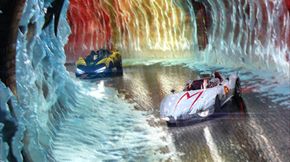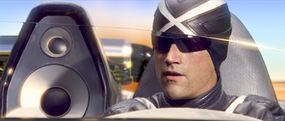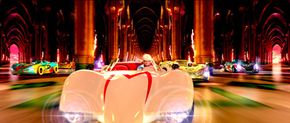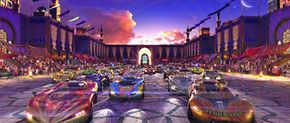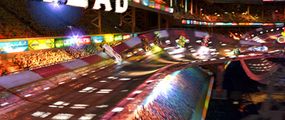Speed Racer and his tricked-out Mach 5 turned millions of kids onto Japanese anime when the cartoon series "Mahha GoGoGo" -- also known as "Speed Racer" -- premiered in 1967. Its 52 episodes have had a cult following ever since. Though its animation is primitive by today's standards, "Speed Racer" was a pioneer for its time and made an indelible impression on many who grew up with it, including the duo behind the "Matrix" films, Larry and Andy Wachowski.
The directing brothers, known for bringing an innovative approach, keen visual sense and cutting-edge technology to their projects, have brought the 40-year-old franchise into the 21st century with eye-popping visuals, high-octane action and a welcome reinvention of the term "family film."
Advertisement
How did they make it look so cool, while bringing it in on time and on its $120 million budget? Well, we won't find out from the Wachowskis; they're known for not doing interviews. But the talent in front of and behind the camera were more than willing to reveal the brothers' creative methods and give detailed insight into the making of the movie.
Actors Emile Hirsch (Speed), Christina Ricci (his spunky chopper pilot girlfriend Trixie), Matthew Fox (the mysterious Racer X), Susan Sarandon (Mom Racer) and John Goodman (Pops Racer) tell tales from the set. Producer Joel Silver gives the big-picture history and overview, and visual effects supervisor John Gaeta provides the technical details. Buckle your seat belt and get ready for quite a ride as we go inside "Speed Racer."
Advertisement
